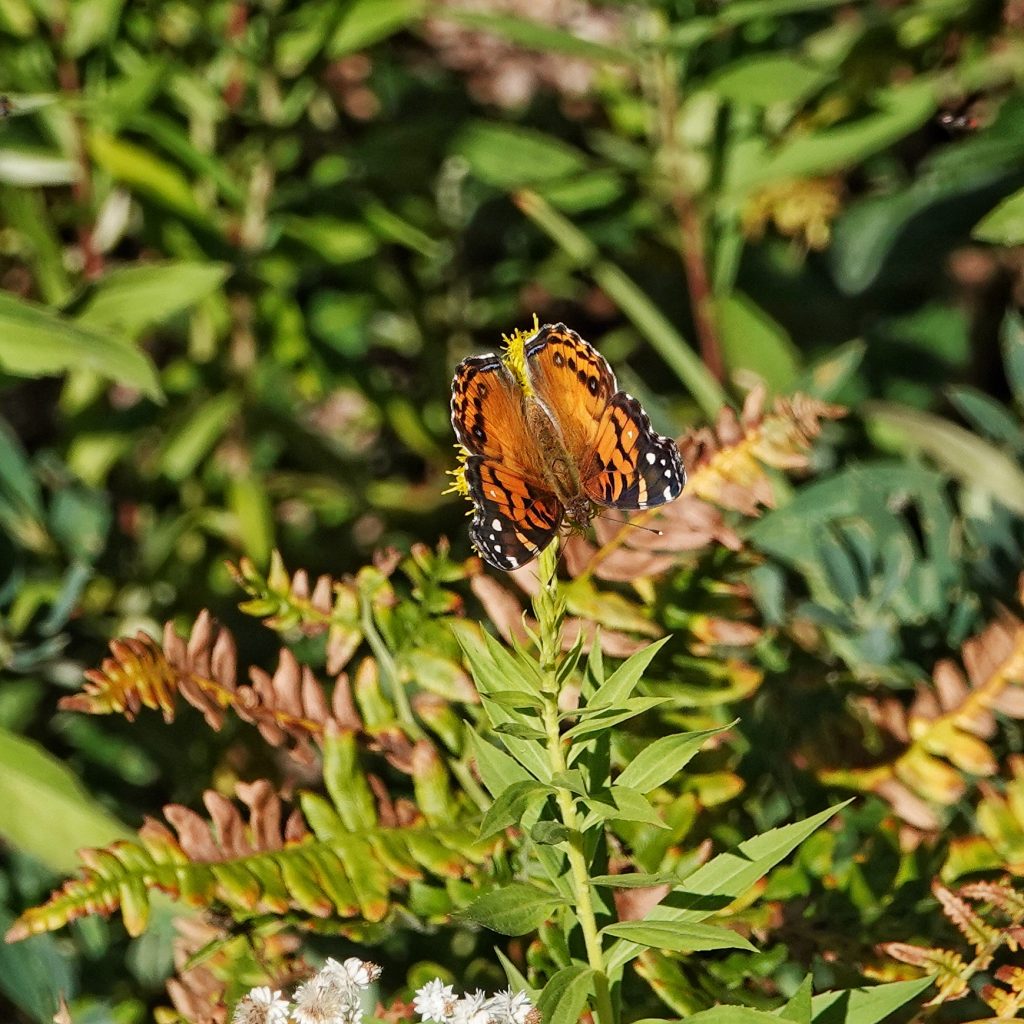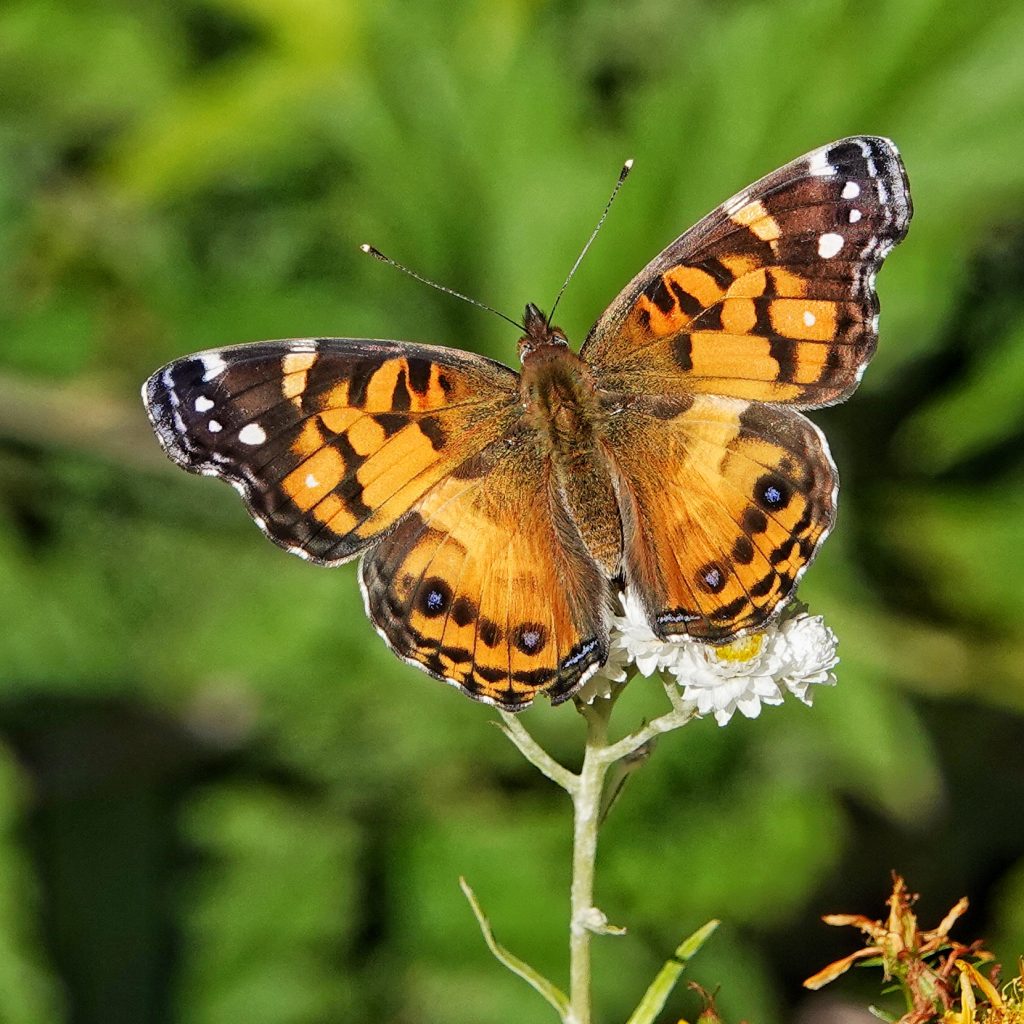
I am very thrilled to have finally found this butterfly, although when I finally sighted one near the crest of Larch Mtn. in Multnomah County, Oregon, I initially dismissed it as a Painted Lady (Vanessa cardui), which can be a very common species. But I started snapping photos anyway, because that’s what I do. Several years ago, when I was quite focused on butterflies, I knew offhand the traits that separated the uncommon-in-our-area Vanessa sp. from Vanessa cardui, but I am very rusty on butterfly identification, and it wasn’t until I caught a glimpse of the ventral side of the wings that I realized this was probably not V. cardui, though it wasn’t till I got home and edited my photos, and dug out my copy of ‘Butterflies of the Pacific Northwest’ (I had been driving Pam’s Kia because of its vastly superior gas mileage and hadn’t thought to throw in the milk crate of duplicate field guides I keep in my van) that I realized that I had found an American Lady (Vanessa virginiensis).
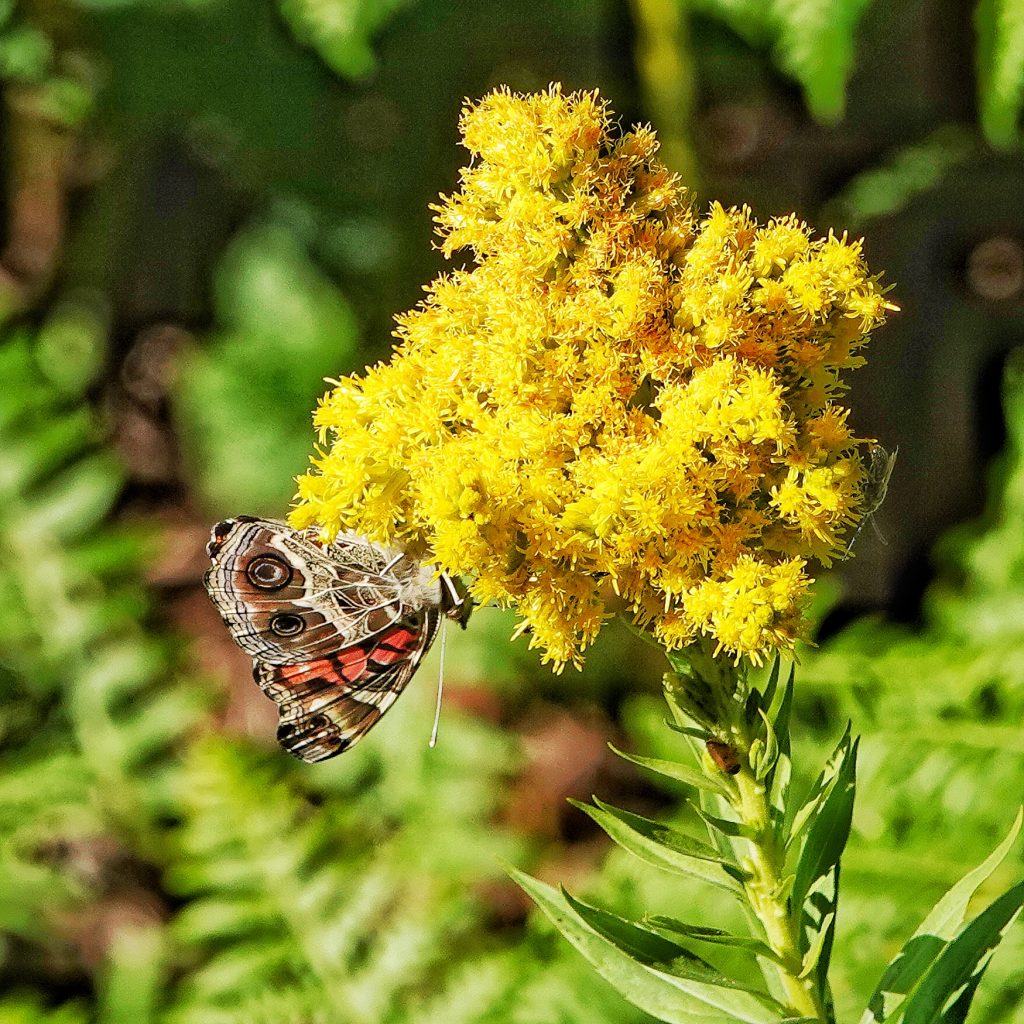
Like most members of the genus Vanessa, American Ladies (also known as American painted lady, Virginia Lady, painted beauty, and Hunter’s butterfly; American Lady is the ‘official’ common name according to the North American Butterfly Association) are migratory. Overwintering adults begin moving northward in the spring, and subsequent generations do the same. And it seems likely that at least some members of the generation that eclose (emerge from pupation as an adult, although the term can also refer to larvae emerging from the egg) in the fall migrate southward to warmer climes.
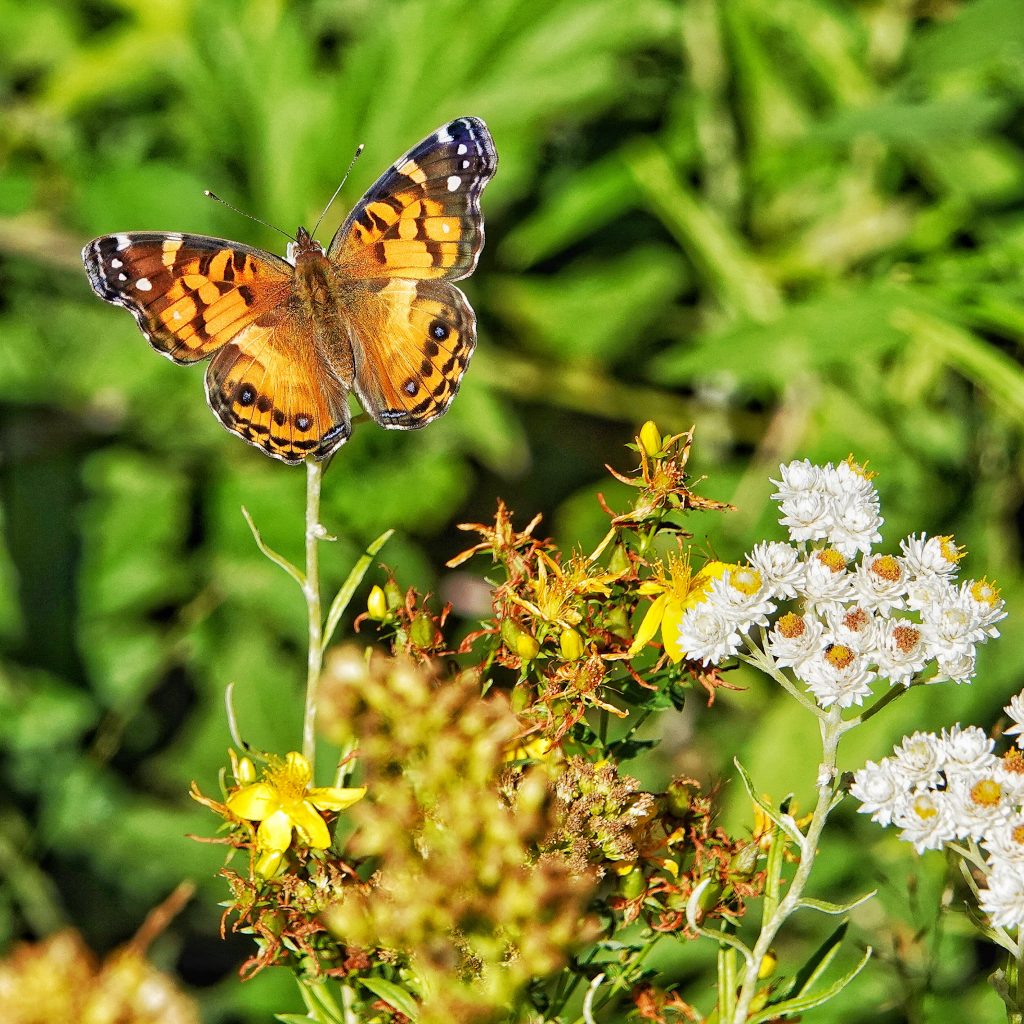
These rather spectacular butterflies are prodigious migrators! Their home range extends from northern South America into Canada, though it is not clear how far most individuals travel in their lifetime. But they can travel a very long ways, as evidenced by the fact that migrants sometimes turn up in Europe! The species has recently been found to have established reproductive colonies in the Azores (Vieira; 2016), and while the seed stock for those colonies may have come from other islands in Macronesia (the archipelagos known as the Canary Islands, Madeira, Cape Verde, and the Azores), most notably the Canary Islands, still there is a thousand miles of open ocean to be crossed from the Canaries to the Azores, as well as the fact that the Canaries are themselves about 2700 nautical miles from the Caribbean. These butterflies can get around!
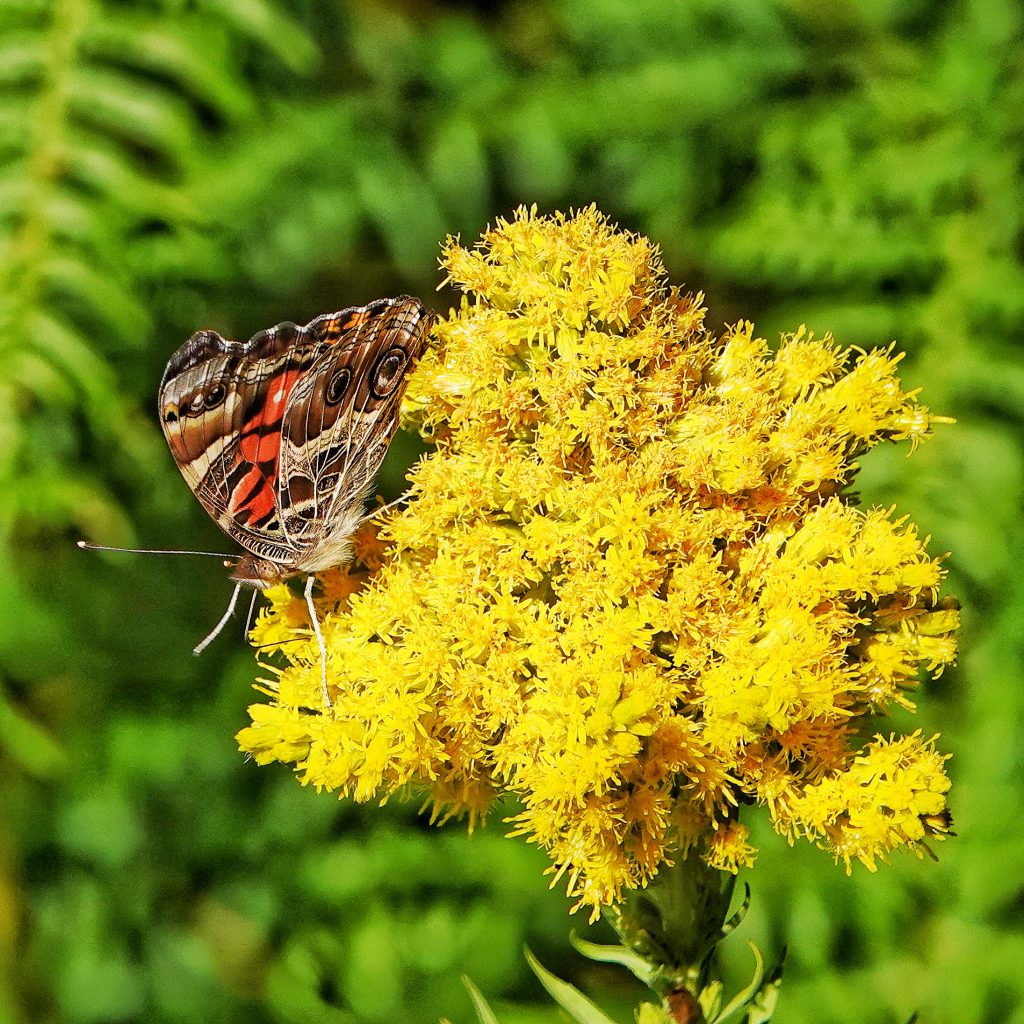
Here in the PNW we are at the northern limit of their range, and there are few adults that overwinter in our region, though with global warming that may change. But there is successful reproduction as far north as Seattle, though it appears to be unknown whether butterflies of this species that eclose in our region journey north or south, or possibly east or west, or even just toward higher or lower elevations. What is known however, is that this species is seldom encountered in the springtime in the PNW, and is the least common Vanessa in our region.
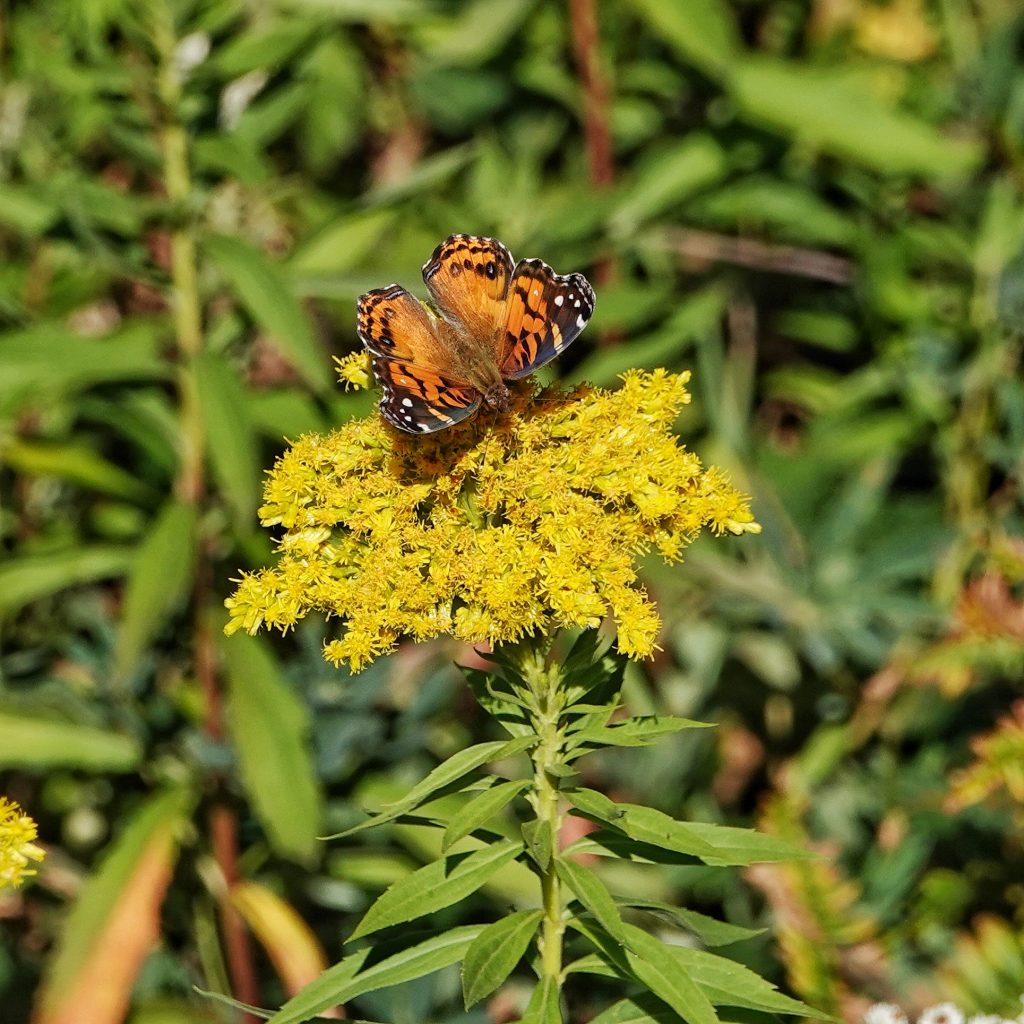
Description– Fairly large (50-60mm wingspan) orange and black butterfly with a flange at the apex on the trailing edge of the forewing, which abruptly becomes concave; subapical (next to the apical white spots) dorsal forewing bar lighter orange than ground color; dorsal hindwing mostly mottled orange, with slightly fuzzy submarginal spots, the inner- and outermost of which are filled with blue; ventral hindwings with 2 large eyespots; late summer/fall generations tend to be smaller than spring/early summer generations.
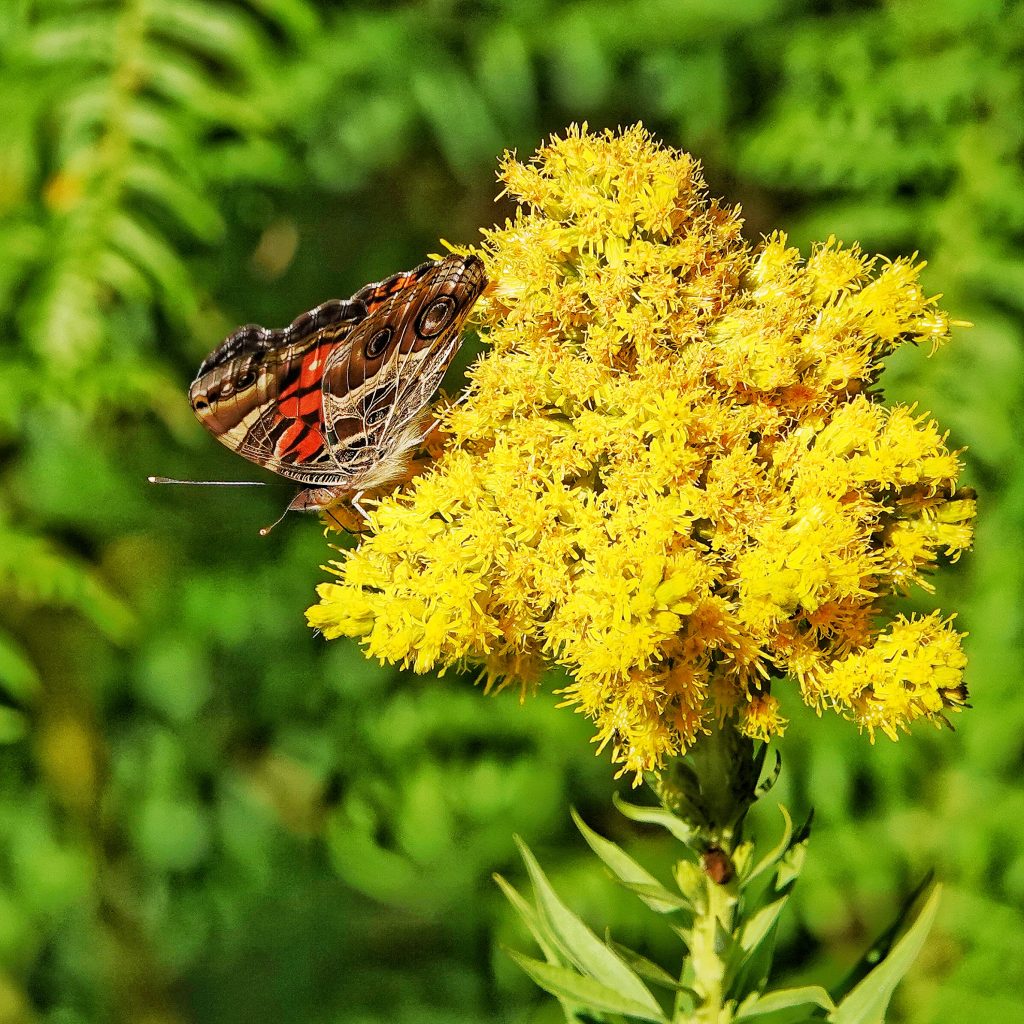
Similar species–Vanessa cardui has the forewing more triangular, without a distinct concavity on the trailing edge, a bright white subapical bar on the dorsal forewing, much more black on the dorsal hindwing, and has submarginal spots on dorsal hindwing more diffuse, with less blue in the pupil of the inner and outer spots; V. annabella (West Coast Lady) has a bright orange subapical bar on the dorsal forewing, and crisp submarginal spots on the dorsal hindwing that are all distinctly filled with blue; both V. cardui and V. annabella have 4, much smaller, eyespots on ventral hindwing.
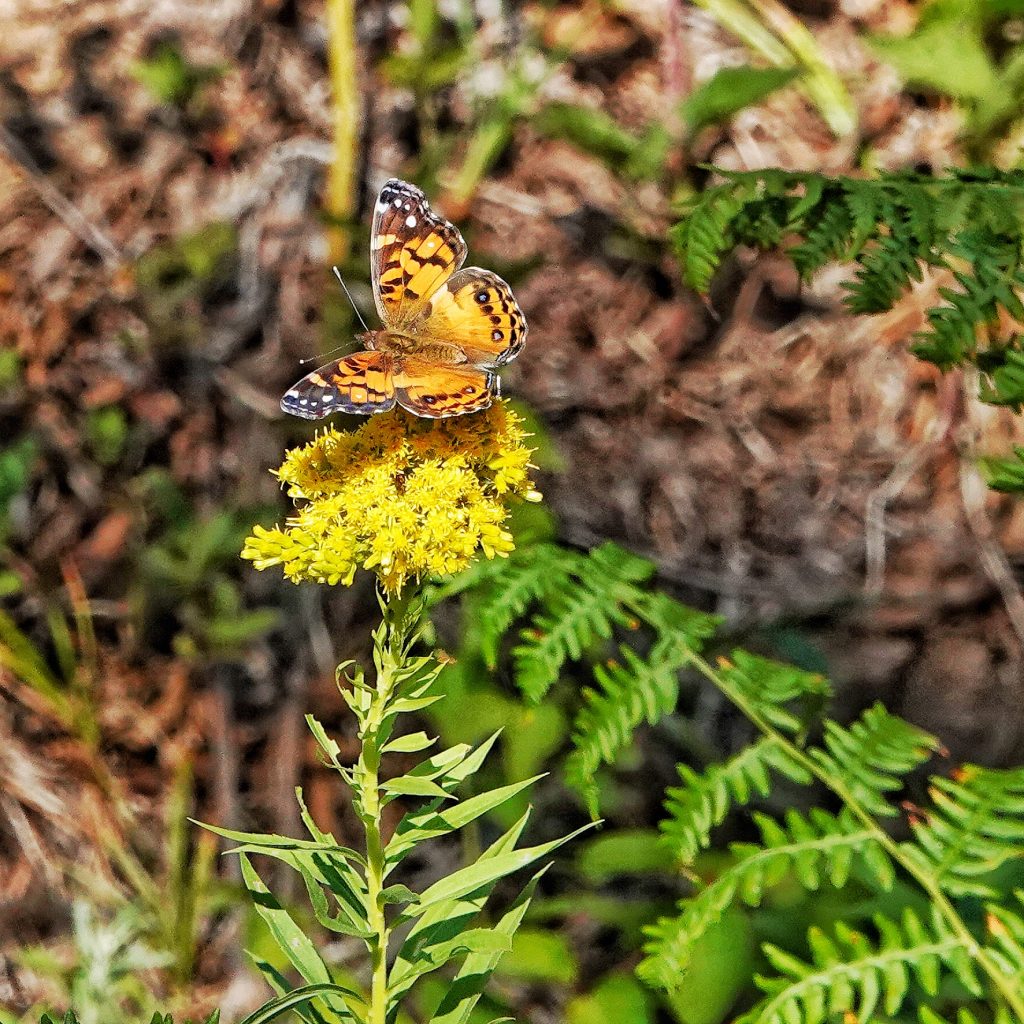
Habitat– Can be found almost anywhere during migration, but favor open areas, especially those that contain both nectar sources and larval hosts.
Range-The Americas; uncommon in our region, and mostly found somewhat randomly in Oregon and n California; rare but occasional in Washington, BC, Montana, and Idaho.

Eats-Larval hosts are pearly everlasting (Anaphalis margaritaceae), cudweed (Gnaphalium spp), pussytoes (Antennaria spp), sagebrush (Artemisia spp), burdock (Arctium), and thistles (Cirsium cymosum, C. arvense, C. vulgare), as well as other members of Asteraceae, Lupinus, Urtica, and Malva; adults nectar at most of the larval hosts, as well as other members of Asteraceae (the one I found seemed very focused on goldenrod), stonecrop, butterfly bushes, and probably others as well; will also eat tree sap and fermenting fruit, and can be found at mud.
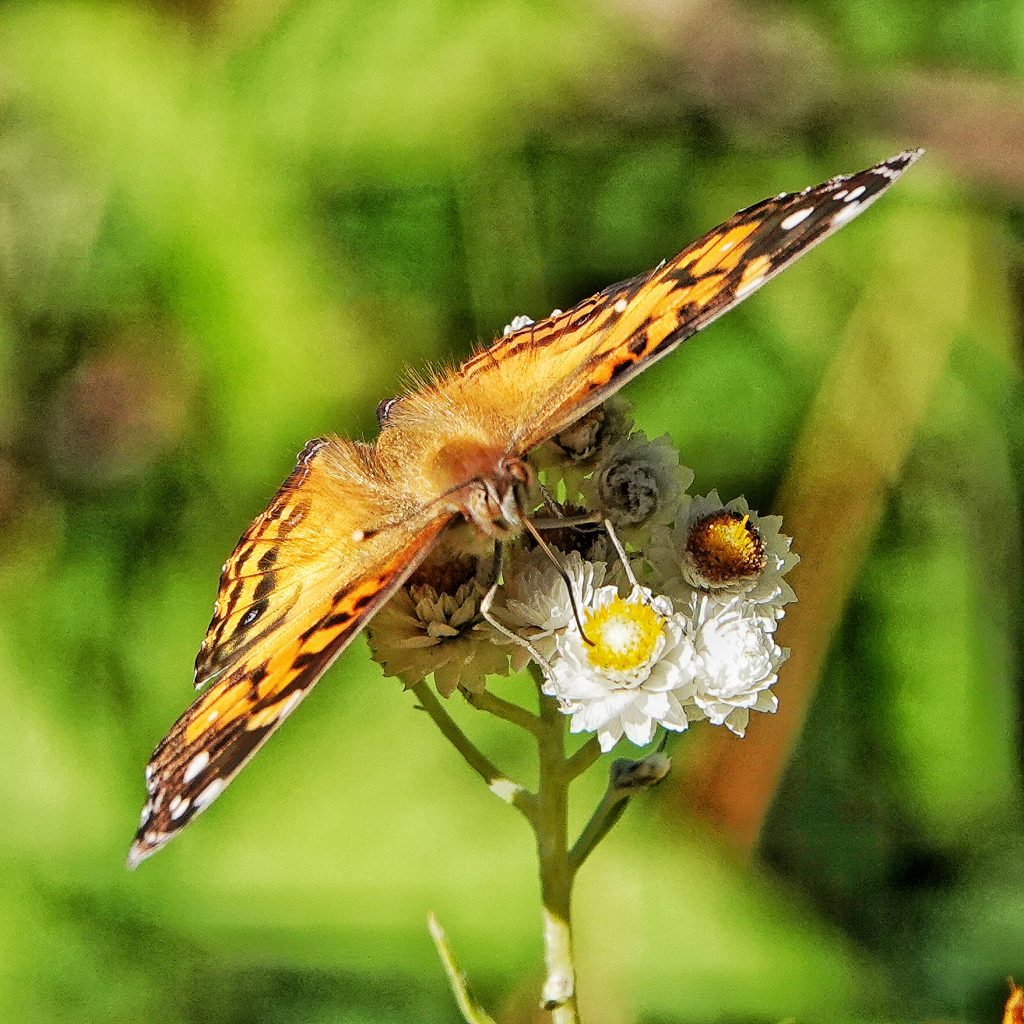
Eaten by– Ichneumonid, braconid, chalcid, and pteromalid wasps parasitize the larvae, as do tachinid flies; larvae are also prey for spiders and other carnivorous arthropods, as well as gleaning birds; adults probably mostly fall prey to bats, birds, and large dragonflies.
Adults active-April-November, peak in August-September.
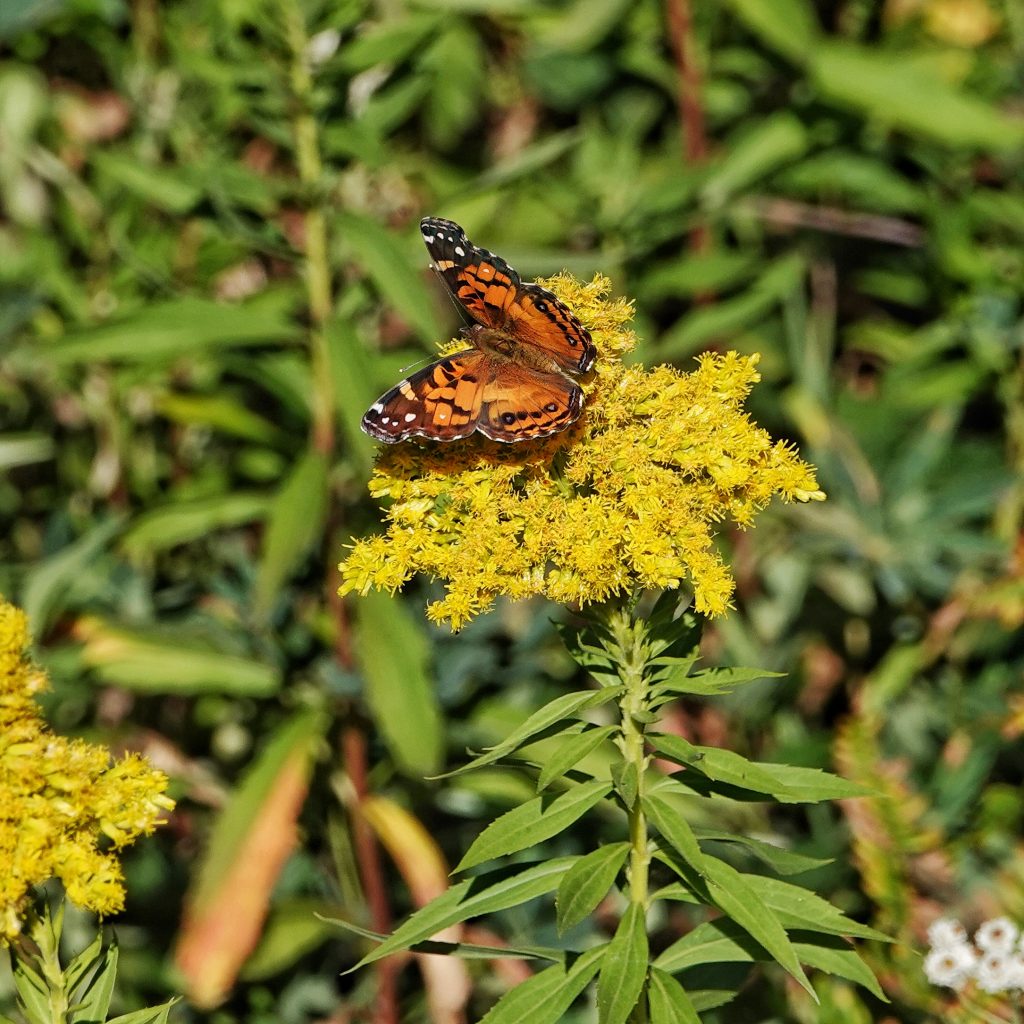
Life cycle– Multiple generations as they move northward;eggs are laid on the tops of leaves; larvae glue together leaves at the top of the plants to make a hiding place; larvae feed at night and on cloudy days; in our region they mostly overwinter as larvae in diapause, although there are scattered records of adults also overwintering, and overwintering adults are common in southern latitudes.
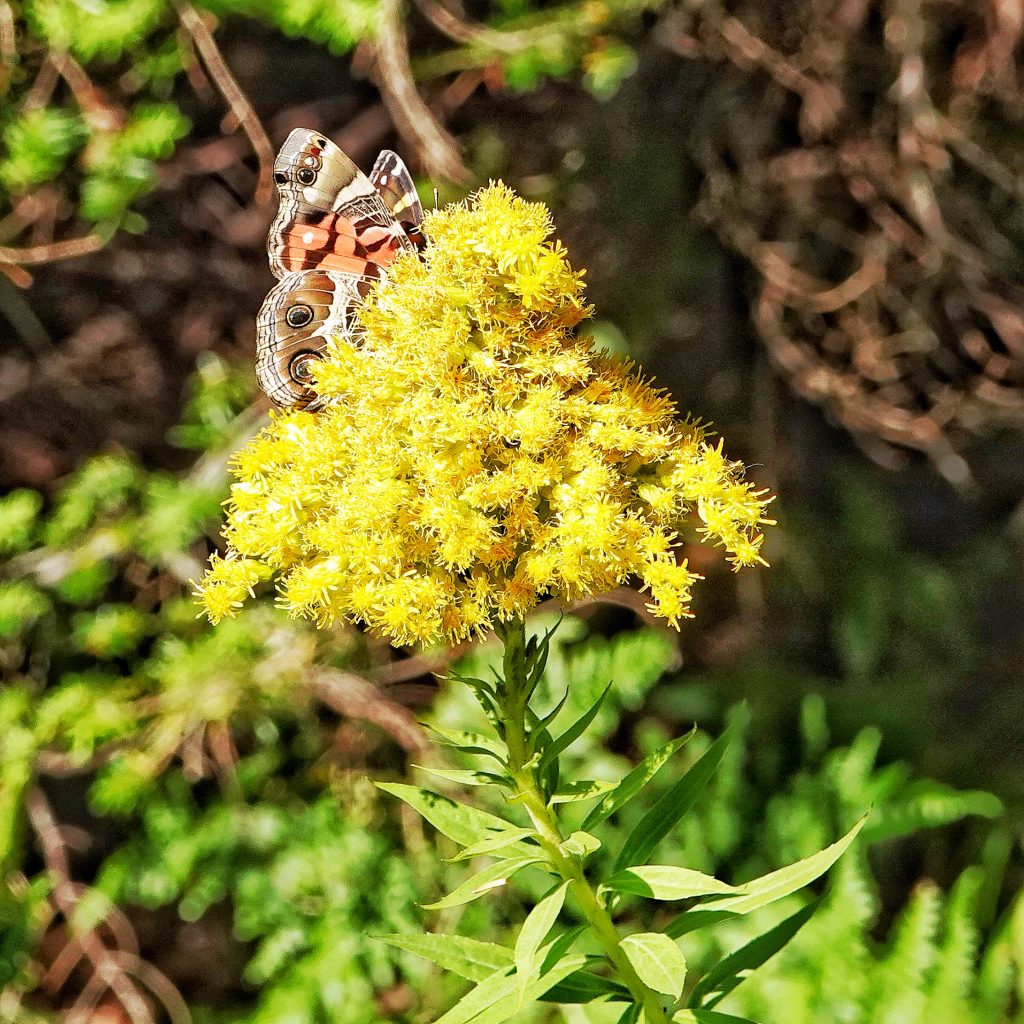
Etymology of names– Vanessa is from the titular character in Johnathan Swift’s (who is most famous in our time for being the author of ‘Gulliver’s Travels’) poem, ‘Cadenus and Vanessa’, though it is thought that back in 1807 Fabricius may have also been punning on the Greek word phanessa, for ‘bright/shining/torch’. The specific epithet virginiensis is based on the location of the type specimen, but in 1773 many Europeans called the whole of the colonies Virginia, and the Virginia colony itself formed parts of Ohio and Pennsylvania, as well as the whole of Virginia, West Virginia, Kentucky, Illinois, and Indiana.
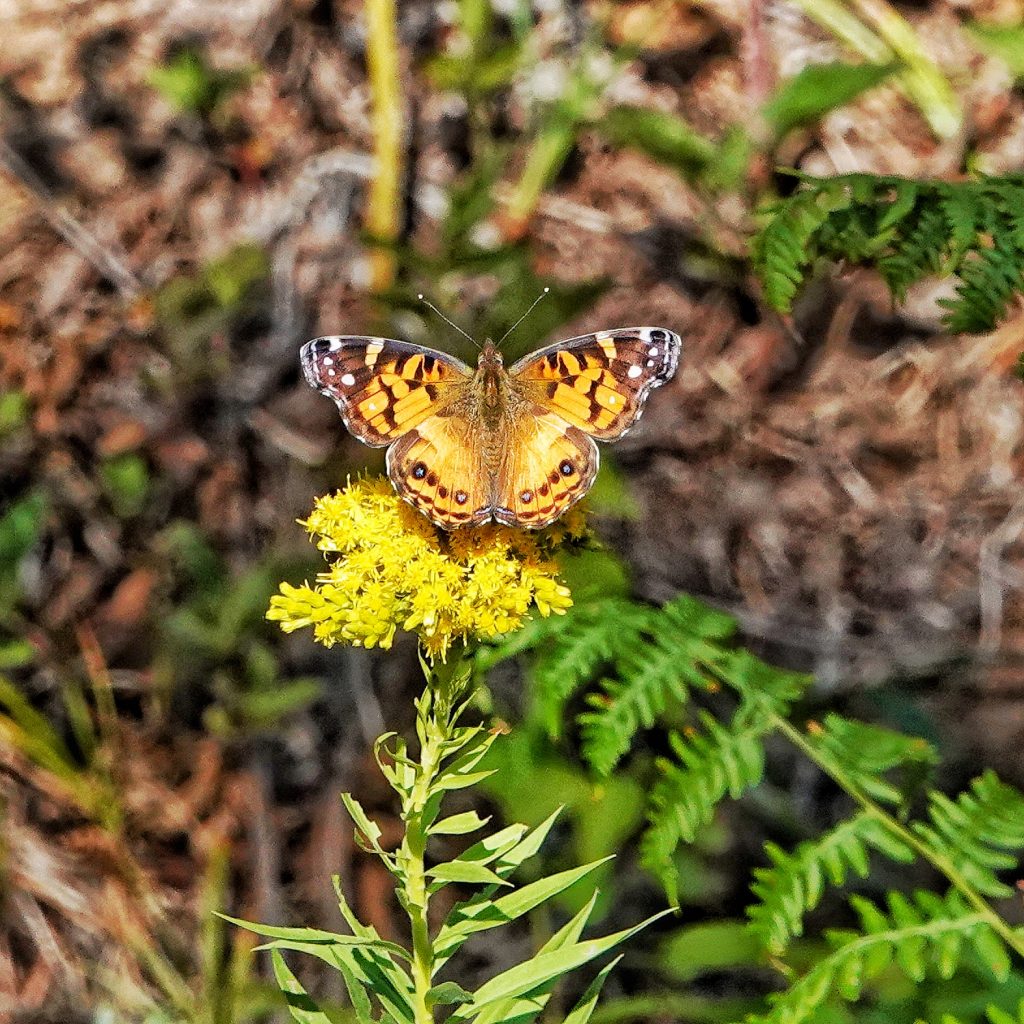
American lady – Vanessa virginiensis (Drury)
Vanessa virginiensis | Art Shapiro’s Butterfly Site
Species Vanessa virginiensis – American Lady – Hodges#4434 – BugGuide.Net
American Painted Lady Butterfly: Identification, Facts, & Pictures
Moth Photographers Group – Vanessa virginiensis – 4434
Vanessa virginiensis (Drury, 1773) in the Azores islands.(Lepidoptera: Nymphalidae)
